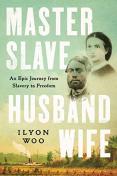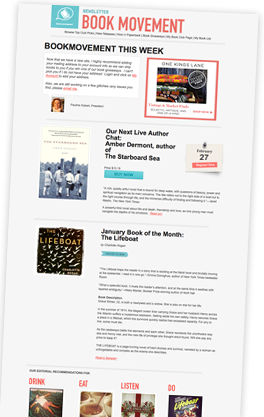
by Ilyon Woo
Hardcover- $18.60
Click on the ORANGE Amazon Button for Book Description & Pricing Info
Overall rating:
How would you rate this book?
Member ratings
The book gave a very comprehensive and well- described account of the perils fugitives faced when on the run.
I was aware many slaves were treated badly but the many cruelties that rained down on these people was heartbreaking. It was well researched and written
Master Slave Husband Wife, Ilyan Woo, author; Janina Edwards, Leon Nixon, narrator
This was a very well researched book, but with what little information was available, it allowed for a great amount of interpretation and assumption on the part of the author, Woo, as she tells the story of William and Ellen Craft and their escape from slavery to what might seem to many today, a quasi-sense of freedom. Although it was very compelling at times, it sometimes felt that there was little corroboration for her explanation of events.
It begins in 1848, when the two slaves fled north from Georgia in search of freedom before they could be sold and separated from their family. They knew full well, however, that fleeing put their very relatives in danger, as well. The story of their journey is an incredible one, fraught with the possibility of discovery and the barbarian punishment that would follow if they were caught.
Ellen Craft, a diminutive woman, posed as a frail, young gentleman who was traveling, at first alone, and then with a slave. The slave was actually William Kraft, Ellen’s husband. They both played their parts successfully. When they arrived in the North, however, freedom was not really free. The laws seemed to change, for and against them, as did the people’s attitudes and prejudices, so they eventually journeyed on and escaped to Europe, where they found far more latitude in the way they were accepted. Still, even there, they encountered prejudice.
In Britain and Scotland, their involvement in the abolitionist movement was more acceptable and successful. They had more support and more access to the public enabling them to speak at events. Though their acceptance was not universal, their events were well attended and they were more able to spread the word about the evils of slavery, in the hopes of ending it. Eventually, after achieving “notoriety”, fame and greater access and freedom of movement, they did return to America where they embarked on a “1000-mile” journey to inform the world about the evils of slavery and to gain support for the abolitionist movement. Although they were never completely free in this racist world, they were able to spread their message more broadly.
So, in the end, this is a story about hope and courage, beyond all reason, that only succeeded because of the goodness of some people who were willing to stand up and be heard, people who fought the idea of slavery. Some of the names were familiar, like Frederick Douglass, Daniel Webster, Henry Brown, and W. E. B. DuBois, but others like the Crafts themselves, were totally unknown to me. I had never heard of the other two Williams either; neither Brown nor Garrison were familiar names. Also, there were a great many names mentioned that I had not known of and did not feel that I got enough information about, like James Somerset and Robert Morris. At times, the book just went on and on and seemed disjointed. I struggled to complete it because it was difficult to retain all the disparate pieces of the story and merge them into a whole.
The Crafts used the rails to escape, not the notorious “underground railway”, but the actual rail lines, as they traveled north, but they did not find the expected unencumbered freedom when they arrived. It was only because Ellen was able to impersonate a white male, in speech and appearance, that they were able to succeed. William played his part as Ellen’s slave to perfection. After all, he had a great deal of experience. This was a story with a happier, though imperfect ending, than its enslaved beginning. The Crafts were met with acceptance and/or rejection, derision or joy, depending on nothing else but their appearance to some and their dignity and courage to others. They were not white; they were runaways and therefore actually considered criminals in many places.
I was surprised to learn that the Democrat run states were more prevalently in favor of slavery, especially to learn about Cape Cod, Massachusetts which was described as a bastion of hate. It made me aware of the duplicitousness and current hypocrisy of the Democrats today, who are there now, the very same who declared they supported the illegal immigrants, but then they shipped them out of their cities at their earliest convenience. I was also surprised, but happy to learn about major companies that supported emancipation and the abolitionist movement, like Colt and Schweppes and even about Daniel Webster who not only fathered biracial children but was supposed to have bought the freedom of some slaves, as well.
I was disappointed with the author’s effort to be overly “woke”, though, by using words more acceptable today than the words used at the time of the book’s writing. The use of slaver and enslaved as words to describe masters and slaves took away from the authenticity of the times. I don’t believe in altering history to satisfy any particular protocol. A Nazi will always be a Nazi and never merely a German soldier following orders, as a rose by any other name will always be a rose. In the same way, a master will always be a master to a slave of those times. Eliminating the word simply alters the history. Cleansing the language and/or changing it distorts the truth. History should be revered for what it can teach us, not altered to assuage the concerns of others who are offended by it. I plodded on to finish the book, always hoping to find it more compelling. Unfortunately, I did not.
Still, the book is a worthwhile read because if it proved anything, it certainly proved that the color of one’s skin is immaterial and should be ignored. People should be judged by the content of their character, their qualifications and merit and not by superficial prejudices. Perhaps our need to focus incessantly on race is not serving the intended purpose of making it meaningless. Often, it was difficult to continue reading because I felt the book was disjointed. The knitting of the many characters and their history was not seamless for me, but instead was often confusing. It seemed to me that the author took great liberty in her assumptions, due to the fact that little corroborating information was available for much of the substance she presented. Still, because the story of the Crafts is little known and the book shines a light on the injustice of their lives and the times, it is illuminating.
Book Club HQ to over 90,000+ book clubs and ready to welcome yours.
Get free weekly updates on top club picks, book giveaways, author events and more








